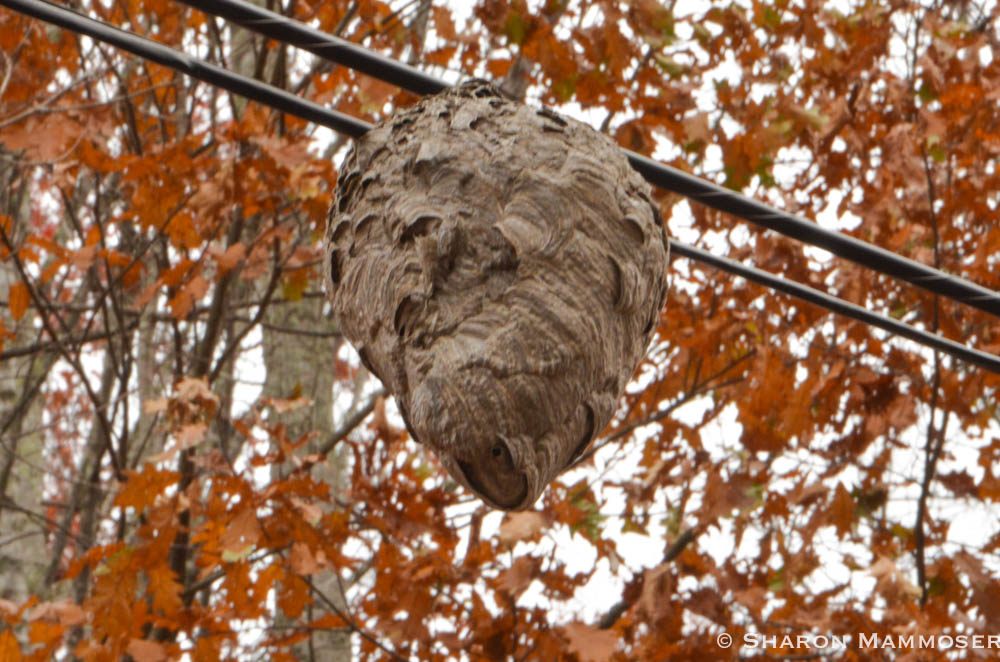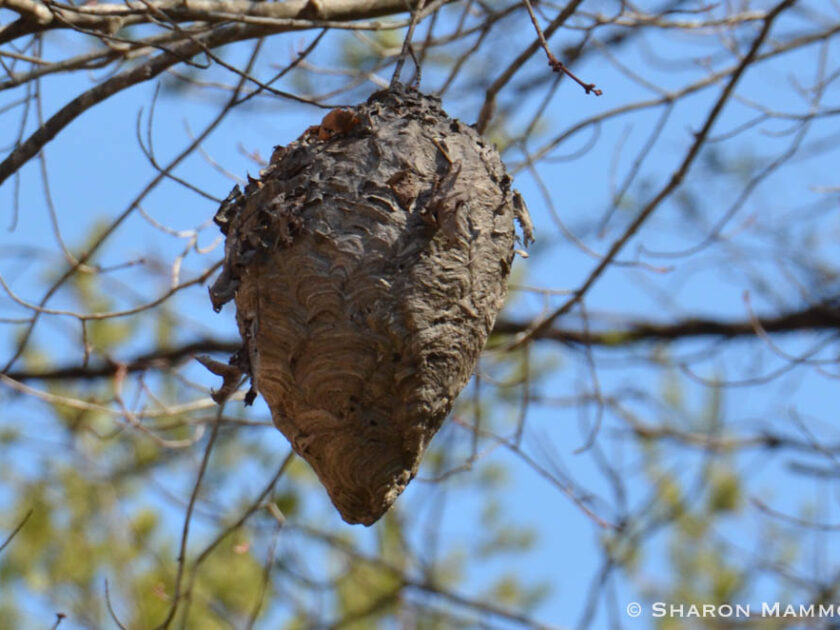Those small gray and marbled pieces of paper were from nest of a paper wasps, as several of you guessed.
In the US there are 24 species of paper wasps, with 220 species worldwide. Paper wasps find old and dead wood, mix it with their saliva and then form it into a thin paper, which they fashion into the shape of a cone. They will build these in branches, on houses, or in other human-made structures. The wasps won’t go out of their way to sting you, but if they feel you are a threat to their nest, they can become aggressive.
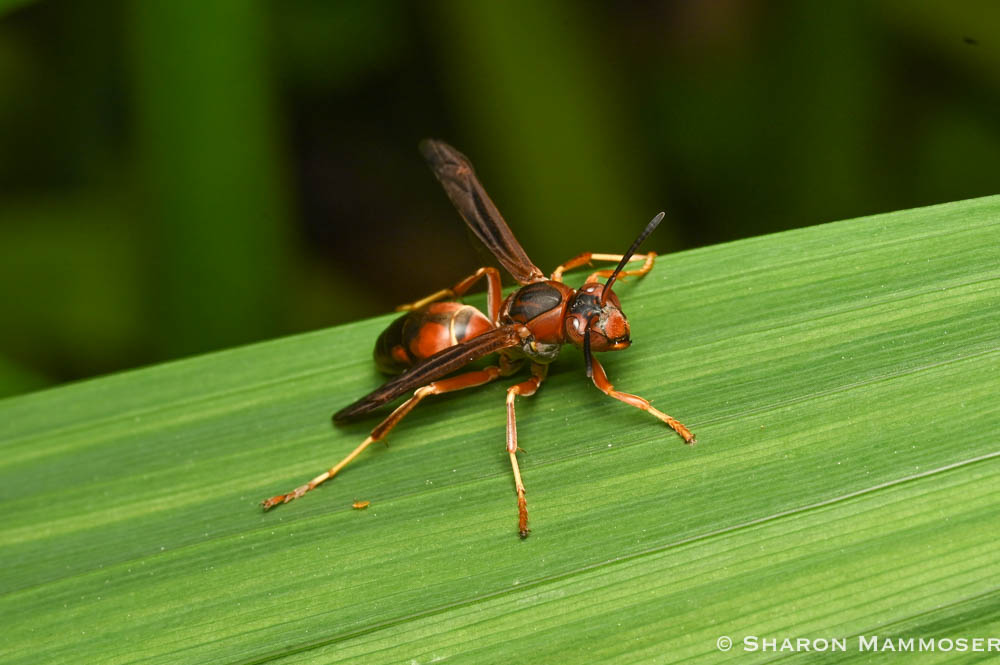
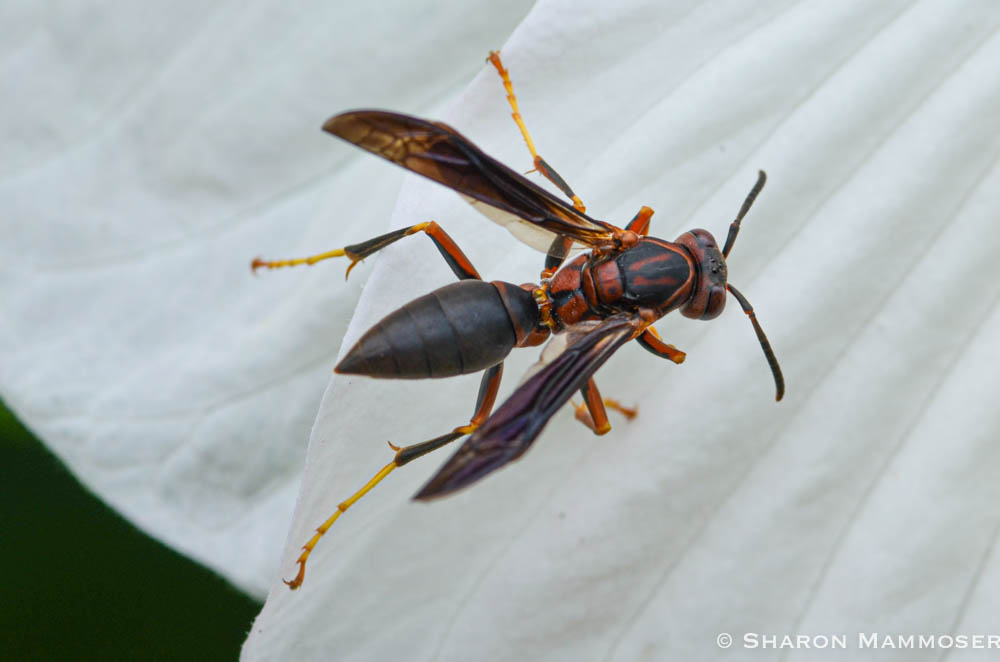
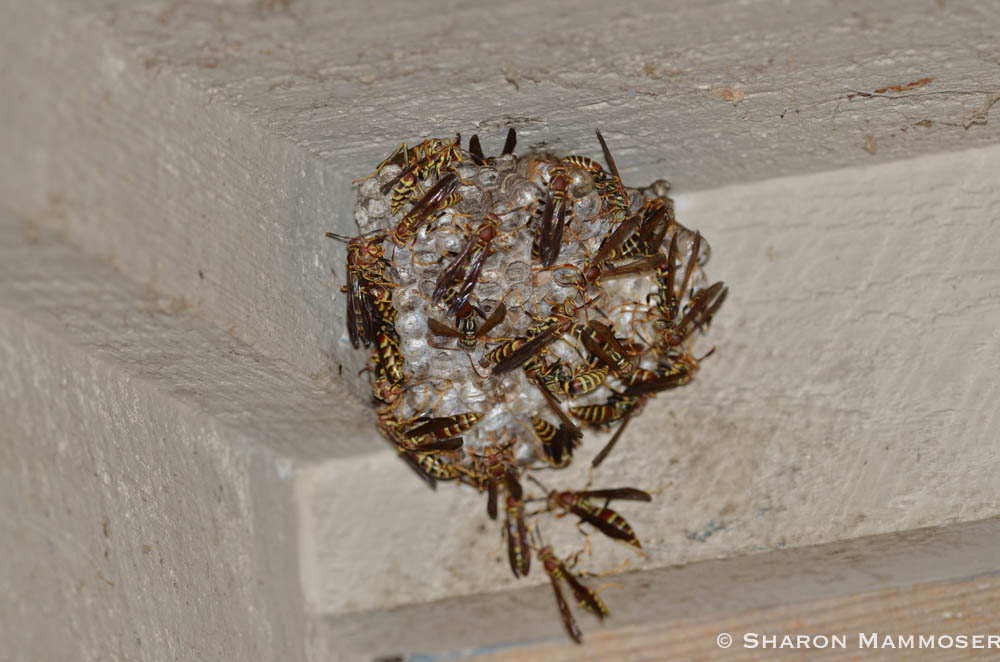
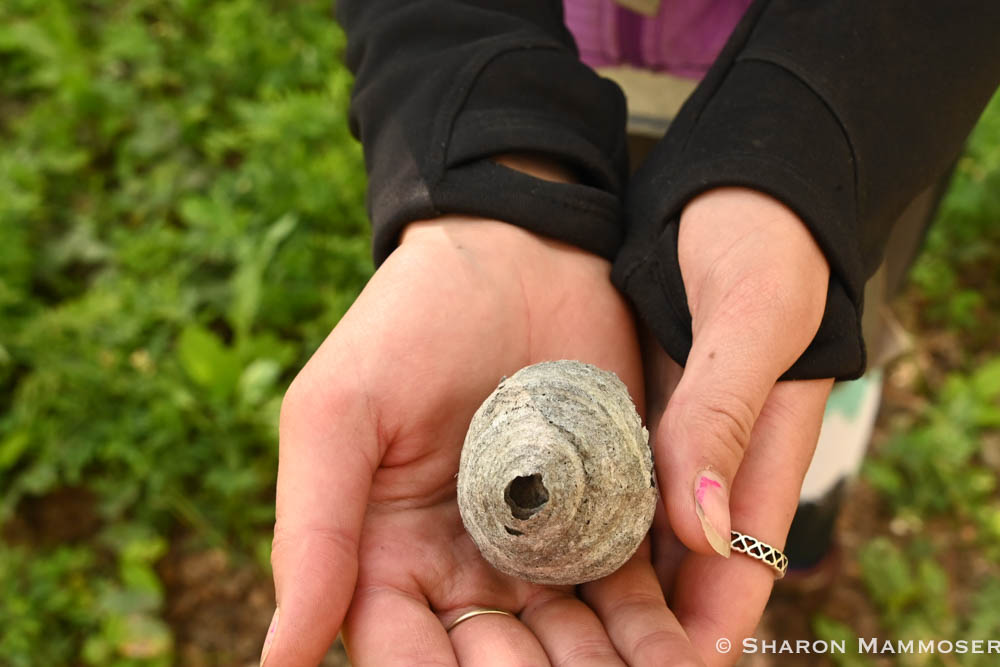
Paper wasps are social insects, and are omnivores, feeding on both plants and animals. They feed on nectar, as well as insects such as caterpillars, flies and beetle larvae. They are also considered pollinators for their habit of visiting flowers and veggies, so in that way are beneficial insects.
Each nest holds between 10-100 larvae. Larvae are fed a diet of caterpillar and other insect remains and will become a pupa after one and a half months. When they emerge as adults, they will join the other wasps to raise more wasp larvae.
The paper nests are only used for one season. As the temperatures start to fall and winter approaches, the wasps will all die, except the queen. She survives winter in a sheltered spot–maybe in the ground, or other protected location. Come spring, the cycle will begin again.
